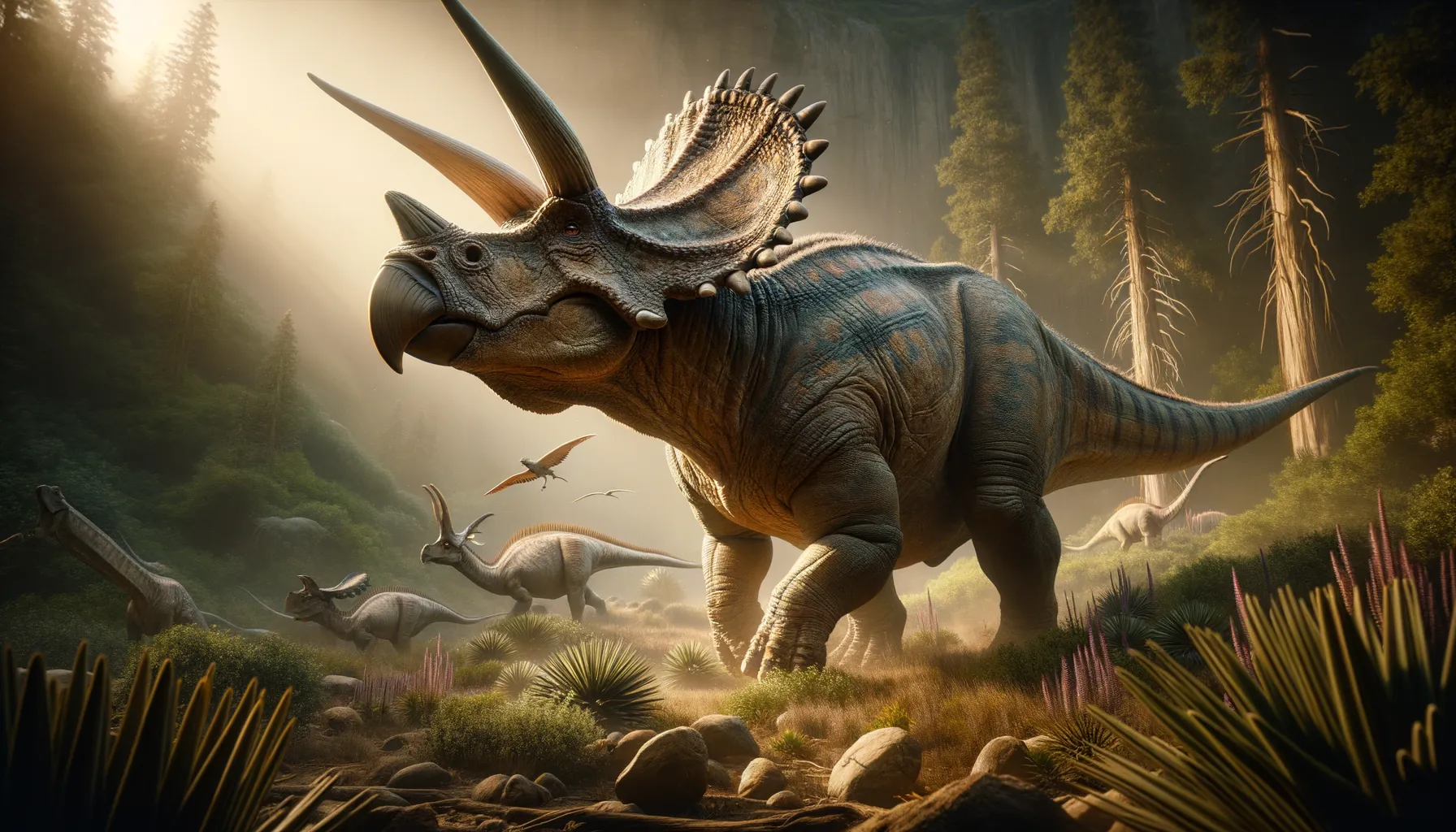
Montanoceratops
A frilled herbivore of ancient times.
Period
Cretaceous
Length
Approximately 15 feet long.
Height
Approximately 3 feet at the hips.
Weight
Around 900 pounds.
Montanoceratops was a small herbivorous dinosaur known for its distinctive, stout build and short frill. It was a ceratopsian, related to larger dinosaurs like Triceratops. Its fossil discoveries provide scientists valuable insights into the evolution of ceratopsians. Though not as large or formidable as its relatives, it played an important role in its ecosystem during the Late Cretaceous period.
Diet
Montanoceratops primarily fed on low-lying plants, such as ferns and cycads. Its beak was well-adapted for cropping vegetation, and its cheek teeth helped in grinding plant material.
Hunting
Montanoceratops was a herbivore, so it did not hunt like predatory dinosaurs. Instead, it likely foraged for food within its habitat, searching for areas rich in vegetation.
Environmental challenges
Living in the Late Cretaceous period, Montanoceratops faced environmental challenges such as changes in plant diversity and climate fluctuations. Competition for food resources with other herbivores was also a constant challenge. Predation pressure from carnivorous dinosaurs meant it had to remain vigilant while foraging.
Speed
Montanoceratops moved at a moderate pace.
Lifespan
Lived an average dinosaur lifespan of several decades.
First discovery
Discovered in Montana in the early 20th century.
Fun Facts
- Montanoceratops was a small herbivorous dinosaur that lived about 70 million years ago during the Late Cretaceous period.
- Despite its size, Montanoceratops had strong legs, making it a skilled runner, possibly to escape predators.
- This dinosaur had a distinctive frill at the back of its head, which may have been used for display or protection.
- Montanoceratops had a parrot-like beak that was perfect for munching on plants.
- Unlike some of its larger relatives like Triceratops, Montanoceratops only had a small horn-like structure on its snout.
- Fossils of Montanoceratops have been mostly found in Montana, USA, which is how it got its name.
- The size of Montanoceratops was similar to that of a large dog, making it relatively small among dinosaurs.
Growth and Development
Montanoceratops hatchlings were likely vulnerable and required a rapid growth phase to increase survival rates. Its growth patterns suggest that juveniles quickly developed the characteristic frill and beak useful for feeding and defense. Fossil evidence indicates varied growth rates, possibly influenced by environmental factors.
Habitat
Montanoceratops inhabited regions that now constitute parts of western North America. Its habitat included floodplains and forested areas, providing ample food sources. Seasonal changes possibly affected the availability of resources, requiring migration or adaptation.
Interaction with other species
As a herbivore, Montanoceratops interacted with a variety of plants and other herbivorous dinosaurs, often competing for similar resources. It needed to be cautious of larger predators, which significantly influenced its behavior and movement patterns. Interaction among its species may have included group living for protection.
Natural lifespan
In ideal conditions, its lifespan could extend to several decades.
Reproduction
Montanoceratops likely engaged in mating behavior during specific seasons, after which females laid clutches of eggs. Nest sites were probably selected based on safety from predators. Parental care might have been present to some extent, ensuring the young reached a stage of relative independence.
Social behaviour
Montanoceratops may have lived in small herds, providing safety in numbers. This social structure could have been beneficial for foraging and protecting the young. Communication via vocalizations or visual displays might have played a role in their social interactions.
Fossil locations
Fossils of Montanoceratops have mainly been found in Montana, offering a valuable look into the dinosaur's morphology. These locations suggest its presence in the broader region of what is now North America. The fossils provide insights into the paleoecology of the time.
